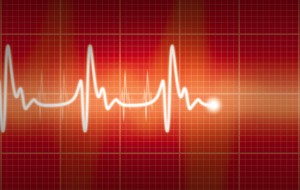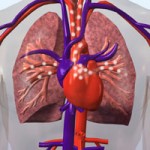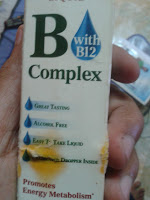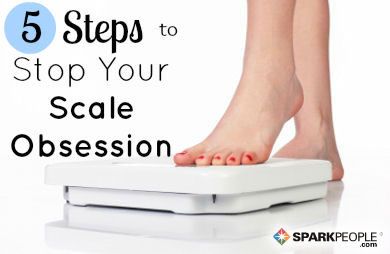Look for these signs to spot a stroke
 Stroke can be treated if detection and treatment happen quickly. But would you know if you or a loved one was having one?
Stroke can be treated if detection and treatment happen quickly. But would you know if you or a loved one was having one?
Research shows that close to 800,000 Americans have a stroke every year. About 140,000 die from them. It’s estimated that one out of every 20 deaths in the United States can be linked to this brain-damaging condition.
Of course, stroke prevention is the best approach to lower the statistics, but the problem will always exist. Still, medical experts say the number of deaths and the number of people suffering significant health damage would be lower if we all could spot the warning signs of stroke.
What is a stroke?
 A stroke happens when the blood to the brain is cut off or reduced. The brain can’t get the required oxygen and nutrients. As a result, brain cells start to die. When brain cells die and stroke occurs, both physical and mental abilities controlled by the brain, including muscle and memory control, can be lost.
A stroke happens when the blood to the brain is cut off or reduced. The brain can’t get the required oxygen and nutrients. As a result, brain cells start to die. When brain cells die and stroke occurs, both physical and mental abilities controlled by the brain, including muscle and memory control, can be lost.
After a stroke, a person can be left with impaired judgement, impaired mobility, difficulty with perception, unusual emotions, significant speech impairment, memory loss and problems from neglecting the affected side of the body. Depending on the area of the brain that is affected, the impairment can be mild or severe.
Think FAST to spot a stroke
 Communications experts say that close to 90 percent of what we say comes from non-verbal cues. In other words, our body language can tell people a lot. Spotting a stroke is like reading body language.
Communications experts say that close to 90 percent of what we say comes from non-verbal cues. In other words, our body language can tell people a lot. Spotting a stroke is like reading body language.
The American Stroke Association says that we have to think and react fast if we want to catch a stroke. The letters F-A-S-T represent the key warning signs that someone could be having a stroke:
F — stands for one side of the person’s Face dropping. It could be numb. Ask the person to smile and see if he or she has an uneven smile.
A – ask the person to raise both Arms. If one arm is weak or one arm drifts downward, this is a sign.
S – is the person’s Speech slurred? Can they speak at all?
T – it is Time to call 911 if any of these symptoms occur. You should also check the Time so you know when the signs started to happen.
Some stroke sufferers will complain about other symptoms such as blurred or blackened vision, as well as headache, dizziness or altered consciousness. Stumbling and loss of balance can also be an early sign.
Keys to stroke prevention
Genetics can play a role in stroke; however, just because a family member suffered a stroke does not mean you will have a stroke. It can mean that you might be at higher risk for having one than a person who does not have a family history of stroke.
Your doctor can help you assess your lifestyle to reduce the risk factors. Medical professionals like myself agree that prevention is the key when it comes to avoiding stroke.
Here are some things you can do to avoid falling victim:
- Maintain a healthy blood pressure. According to Harvard Health, high blood pressure is the biggest contributor to the risk of stroke.
- Lose some weight. If you have a few extra pounds, it turns out that losing as little as 10 can lower your stroke risk.
- Exercise more. Studies show women who walk three hours a week are less likely to suffer a stroke.
- Drink in moderation. Once you start drinking more than two drinks per day, your risk goes up. Studies show red wine should be your first drink of choice when it does come to alcohol because it has resveratrol, which is thought to protect the brain.
- Quit smoking. Smoking increases clot formation.
- Treat diabetes. High blood sugar over time can damage blood vessels, causing clots to form.
Having a stroke can be life altering, not only for the patient, but for family members as well. In many cases, all aspects of life – social, physical, emotional, financial – are thrown upside down when someone has a stroke.
It’s a hard road to travel, but consider how easy it is to keep a FAST list as a reminder on your fridge or in your wallet. Spotting a stroke early and getting them to the ER quickly could be vital to survival and determining what quality of life the person will have following rehabilitation.
-
Diet Tips for HCG Dieters
No matter who you ask for diet advice, t
-
7 Certain Manners To Take off 7 Pounds In 14 Days
Scouting around for tips on how to quicken unwanted weight loss is now
-
Fight Obesity With Diet Pills And And A Proper Diet
With the booming growth in obesity in the US, more and more weight los
-
Weight loss exercises for girls
Girls pay attention to their weight and appearance. To maintain weight
-
Best Weight Loss Products - Only The Best, Designed Especially For You
When you think about starting a new diet, you must think about seeing
-
5 MMA & Boxing Fitness Secrets From The Borneo Monster
So who the heck is the Borneo Monster? A
- DON'T MISS
- Check your weight-loss readiness
- Take Control of Your Weight with the Alli Weight Loss Pill
- Natural Weight Loss Methods That Really Work
- The Importance of Blood Building Nutritional Supplement Glyconutrients and the Risk Of Belly Fat
- Acai Berry pills review
- Top Weight Loss Techniques - Fast Weight Loss Exercises
- Weight Loss Foods: Why Is Açaí So Good For Weight Loss?
- The Energy of Food: A Missing Piece in the Overeating Puzzle (VIDEO)
- Quick Ideas To Help With Your Weight Loss For Women
- Choose A Good Weight Loss Plan




